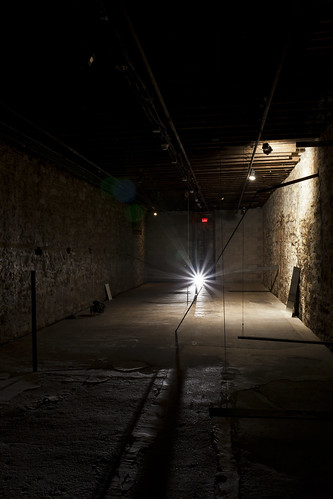Sunday, March 31, 2013
Vito Acconci Reading
"An open public space, like the piazza, is a vast multidirectional space. People are dots sprinkled across the floor; one dot slides into another and slips past another to continue on its own. A number of dots queue up to form a dotted line of tourists who follow a flag and crisscross another dotted line of tourists. Here and there, as if scattered through a sea, dots merge together into islands. It's every person for him- or herself here, every group for itself, and the tower above all. The space is public, but the people in it don't function as a public. In order for public space to be a gathering place, where all the people are gathered together as a public, it needs a gathering point. To be seen and read as a public, to act and/or be used as a public, the dots have to form a circle, as if around a point; or they have to form a line, as if toward a point; or they have to blend together so that they form a point themselves, which blots and spreads out to cover the piazza floor."

Space as public, but people not functioning as a public can be true but is also reversible. The individual 'dots' forming the public, once open to meeting each other do 'form a point themselves'. I wonder if it is possible for this larger point, or larger interaction, to lose boundaries. I feel that in order to do so, individuals would have to loosen their grip on the self and be open to individuals and experiences beyond their comfort zones and possibly their understanding.
Tuesday, March 26, 2013
Artist Talk- Natalia González Requena
Natalia González Requena is an artist from Santa Cruz, Bolivia living and working part time out of Pittsburgh, Pennsylvania. In 2002 Natalia obtained a licentiate in Fine Arts at the Pontifical Catholic University in Santiago, Chile. She then went on to get both a Master of Fine Arts in studio art and a Certificate in the College Teaching of Art from the Maryland Institute College of Art, in Baltimore, Maryland. Natalia has instructed courses at the NUR University in Bolivia and the UPSA University in Santa Cruz. She has had numerous installations and exhibitions in Santa Cruz, Baltimore, Philadelphia, Buenes Aires and various other locations.
Natalia's work is structured by three components: body, time, and space. Much of her work involves recordings, which she considers "as a trace of interactions in a field of experience." The body becomes the subject of the experience, time the continuum that holds the events, and space interacts with the relative position and direction of everything. "The use of recording equipment, video or audio, goes beyond the role of documentation by expanding into the category of drawing."
I can definitely understand and appreciate Natalia's fascination and investigation of the relationship between body, time and space. However, had this not been explained to me, I would have had no idea what her art was supposed to convey. I am curious as to whether there are written explanations at her exhibits or if it her exhibits are left open to interpretation. An aspect of her artwork that I enjoy is her use of deskilled media, or using materials in unusual ways. An example of this is using a projection screen as a light source, rather than as a mode to project a large image.
Natalia worked alongside Valentina Bacherer on Borrowed Time, an awarded installation exhibited at the XVIII Biennial in Santa Cruz, Bolivia. In this exhibit she took photographs of neighborhood guards sitting in the chairs they occupy while on watch. She then gave the guards new chairs in exchange for their old ones. The chairs were then displayed in front of the photos taken. Of all her pieces, this is my favorite. I find the tattered, pieced together chairs and images of the men beautiful. They are both worn with age and experience, but give hope for safety through their reliability.
Thursday, March 21, 2013
Thursday, March 7, 2013
Subscribe to:
Posts (Atom)










